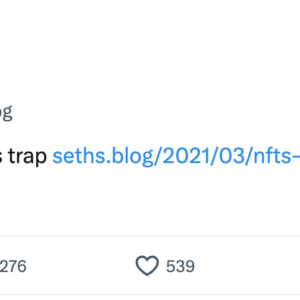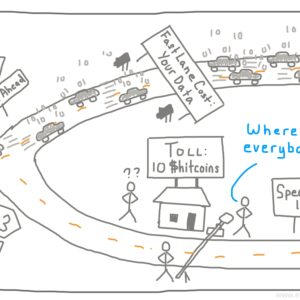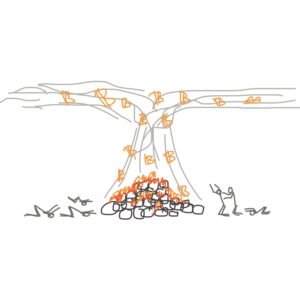The Hedgehog Model for Decision Making
I'm a huge fan of any models that find applicability beyond their intended domains and there are few quite as versatile and useful as The Hedgehog Model.
In his seminal book "Good to Great", Jim Collins examines 1,435 businesses over a period of 40 years in order to answer the question "what separates the good companies from those which make the leap and become great companies?" Over the course of his analysis, he uncovers a variety of factors that drive this distinction but one of the most fundamental concepts he explains is "the Hedgehog".
This idea is based on a fragment attributed to the ancient Greek poet Archilochus which says "a fox knows many things, but a hedgehog one important thing." Both these animals have survived successfully by deploying greatly different strategies. The fox is clever — she knows a great many things and tends to rely on her intelligence to hunt and survive. The hedgehog is a far simpler creature — when she is threatened, the hedgehog simply curls up into a ball and points her spines outwards.
No matter how clever the fox is, this simple defense is enough to grant the hedgehog its survival.

Image sourced from The Mission
Jim describes the malady of cleverness amidst his "control" group of companies. This crops up when a business leader chases complexity and diversity, thereby weakening, diluting and ultimately tearing apart the business over time. To contrast this, every single "great" leader he examined displayed a far different tendency — the "Hedgehog" — whereby the leader successfully distilled all the complexity of the business into a single powerful idea and relentlessly focused on excelling at that.
It may seem intuitive that one should focus on simplicity but the reality of running a business makes that exceedingly challenging. It's very easy to fall victim to a desire for diversification or to explore new business lines or to take on shiny acquisitions. It's easy to let the business organically grow into a frankenstein of fiefdoms and a monstrosity of complexity. It is very difficult to wrangle this complexity into a single laser beam of purpose.
According to Jim, that hedgehog simplicity is absolutely necessary to make a company great and its loss tends to precipitate a decline.
Though the Hedgehog Concept is used to describe great businesses, it can be extended into what I call the "Hedgehog Model" and applied with startling effectiveness to drive decisions on everything from professional focus to social interaction to personal branding. Let's take a look at the original Hedgehog Concept and then distill it into its core components for extension to other areas.
And hedgehogs. Lots of adorable, adorable hedgehogs.



Discovering Your Hedgehog
In business, the recipe for discovering your Hedgehog looks like a simple Venn Diagram of overlapping circles. Where they meet in the middle, you will find what you should pursue to the exclusion of all else. If you can't meet the specified criteria, it's time to seriously reconsider your business.
- What are we (or can we be) best in the world at?
- What is our core team incredibly passionate about?
- What creates economic value and drives our bottom line?
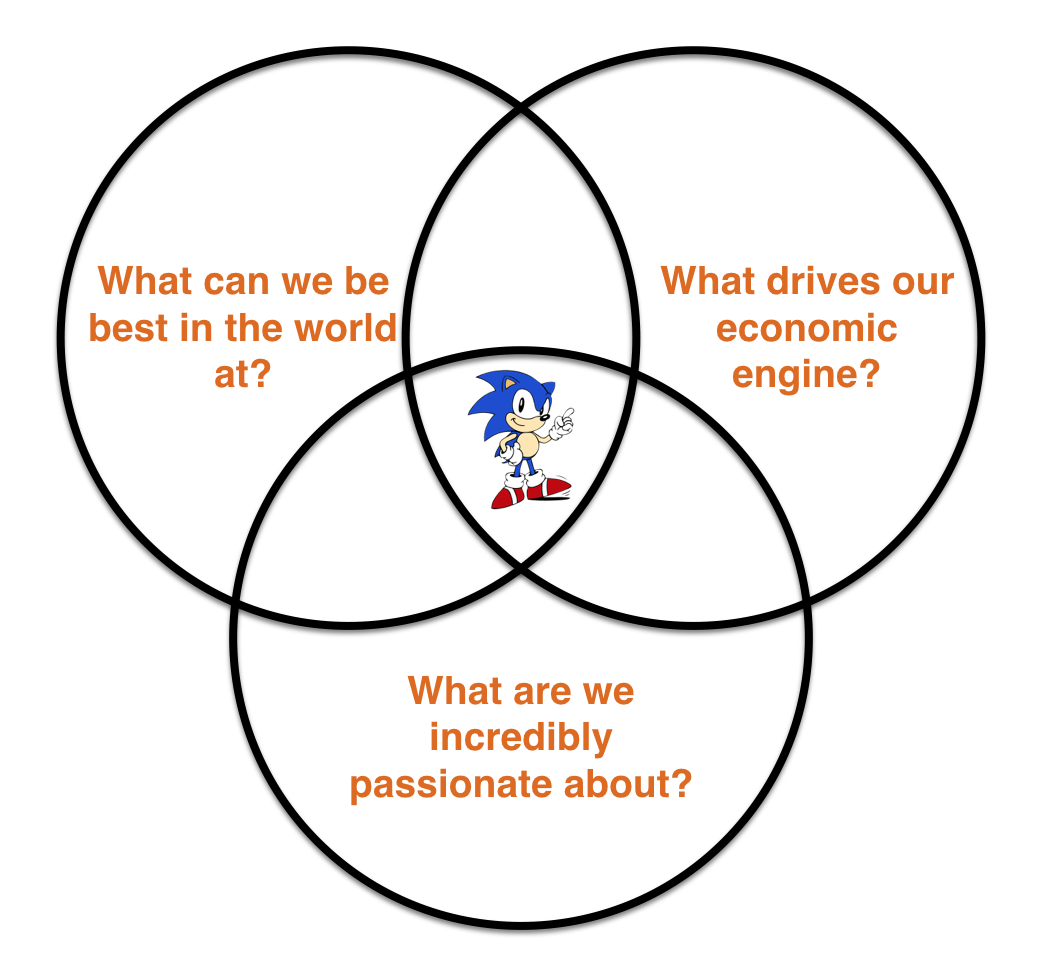
The hedgehog only works if it's paired with brutal honesty about both how your business currently functions and what is feasibly possible.
Extending the Hedgehog
The diagrams above are hardly only applicable to business. In fact, if you distill their essence, they can be applied to identify the best path forward for virtually any major decision:
- SKILL: What can I be great at?
- PASSION: What am I truly and sustainably passionate about doing?
- VALUE: What will actually create value that I can harness?
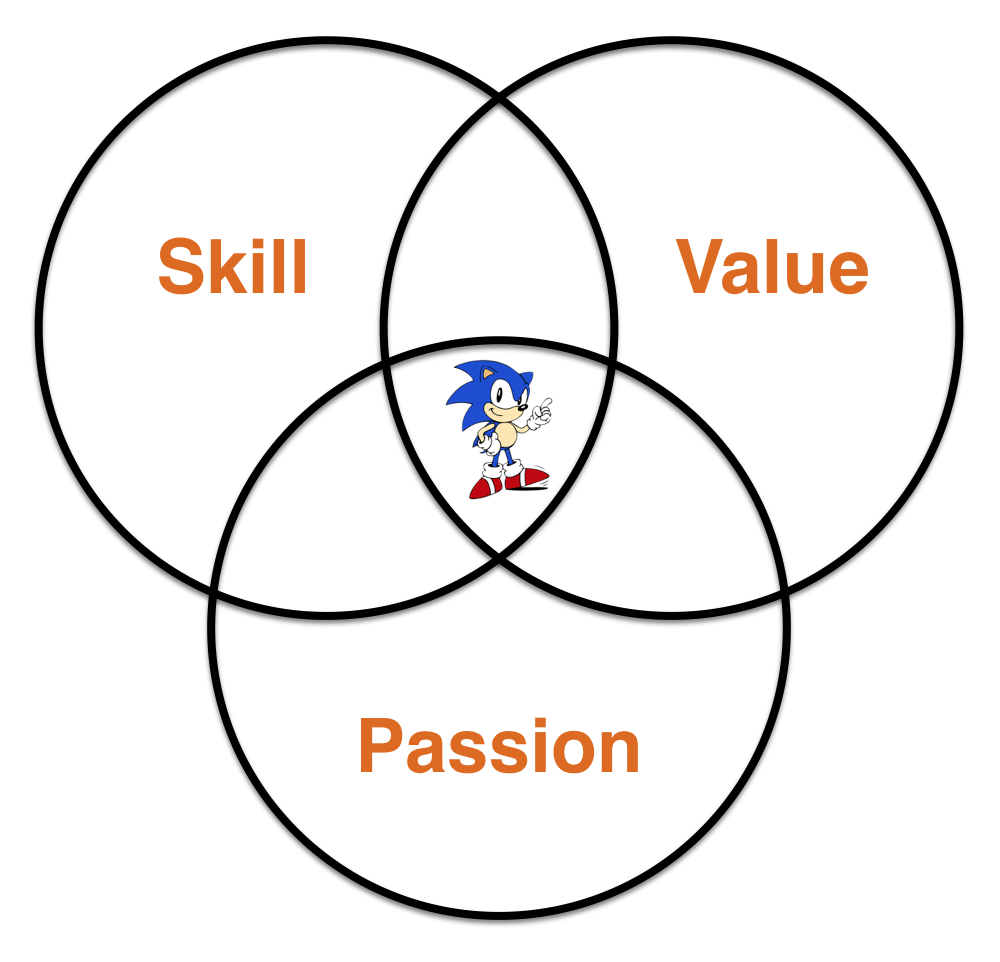
The intersection of these three dimensions — Skill, Passion and Value — represents the sweet spot for ANY endeavor which requires sustainability and excellence. Let's see a few examples to show you what I mean.
Example: The Hedgehog of Life Purpose
No matter how old or experienced you are, you probably return with some regularity to the question of "What should I do with my life?" Maybe that's with a professional lens or maybe it's in the context of social initiatives or family. Regardless, applying the Hedgehog Model gives you a clear way to evaluate your options.
In the diagram below, I've added a number of hypothetical life options which you might consider and placed them according to how a hypothetical person might evaluate them:
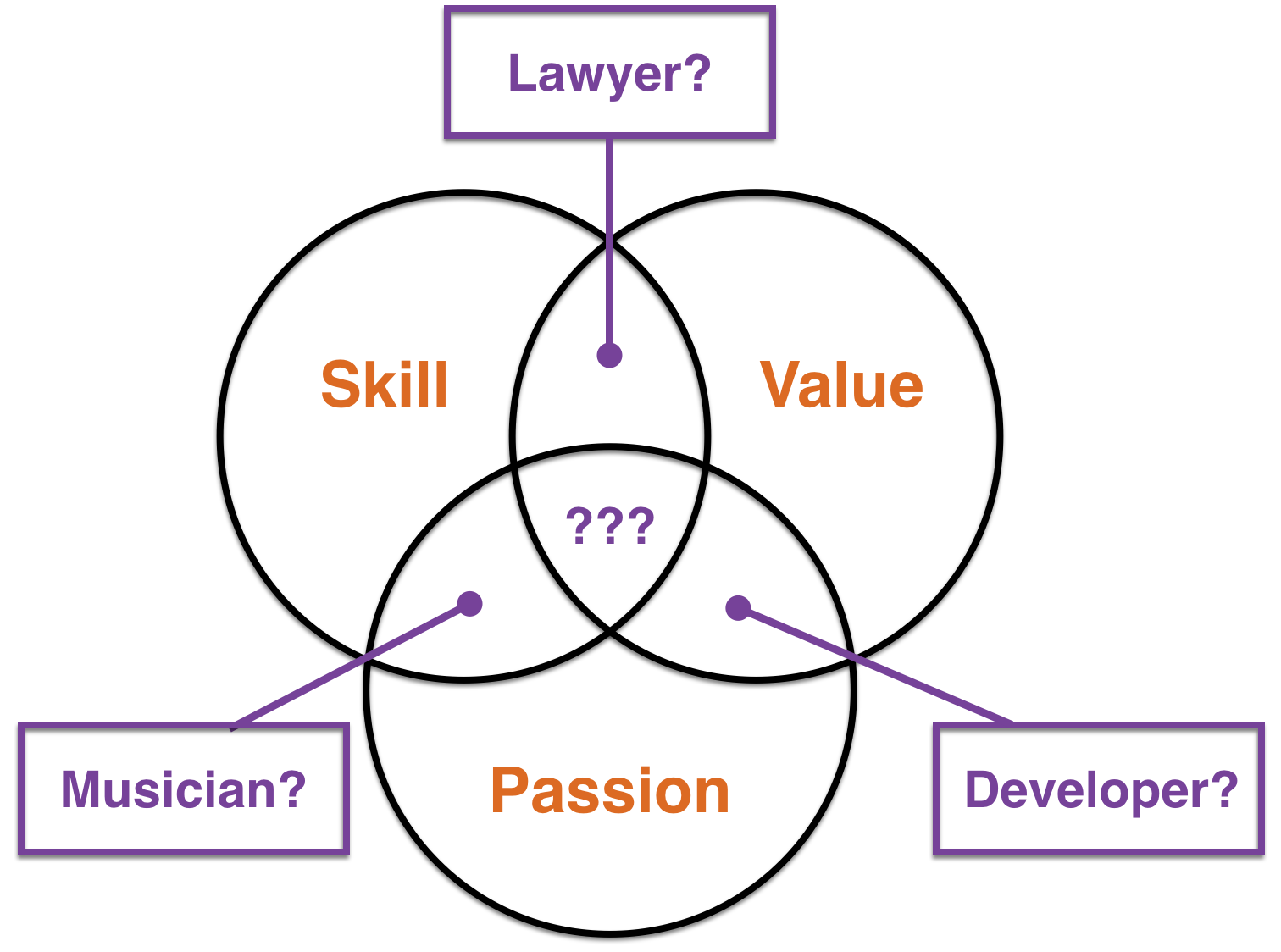
If you are a healthy blend of skills and passions, it isn't hard to construct a series of professions which hit 2/3 of the criteria:
- Corporate Lawyer: Maybe you're smart and analytical (+Skill) and want a profession that allows you to convert that into a strong and sustainable salary (+Value). Business law might be for you… but if you aren't genuinely passionate about working with business law issues and the people they attract, you will probably feel like your soul is being pulled out bit by bit every day (-Passion) and therefore this isn't likely to be an ideal profession for you.
- Musician: Maybe, thanks to a childhood married to your saxophone, you are a very talented musician (+Skill) and absolutely love getting up in front of the crowd to perform (+Passion). But, unless you're comfortable with gig wages or play in a way that crosses to a lucrative mainstream style, you probably won't make the kind of living that will be sustainable for you (-Value).
- Software Engineer: Maybe you absolutely love building simple web pages for your friends and family (+Passion) and know that becoming a software engineer is a lucrative and in-demand option (+Value). But not everyone is born to solve hard problems and you might constantly struggle to get past the most basic syntax (-Skill) so, no matter how much you try, this isn't likely to be the right fit.
Unfortunately, sustainability and true success lies in the intersection of all THREE criteria. Sometimes what you love just doesn't create enough value for others to be sustainable. Sometimes you have to admit that you just aren't going to be great at a particular thing. And sometimes you need to acknowledge that the path towards monetizing your intelligence or education with a skilled but ultimately unfulfilling profession will leave you burned out and miserable in 10 years.
This can be particularly insidious when you fool yourself. The Bay Area is replete with entrepreneurs who kill themselves to be the next Steve jobs, developers who fight their nature to be the best coders and artists who follow their passion for creation while remaining blind to all else. But the success stories we hold up are often from people who are hedgehogs in ways that we are not. Can you picture Steve Jobs NOT waking up and fundamentally needing to run Apple every day? Despite so much trying, the "next Steve Jobs" is probably not you.
Conclusion
The Hedgehog Model, or the intersection of the dimensions of Value, Skill and Passion, can be used to frame pretty much any major decision with long-term implications but is particularly effective in those decisions which rely on your human will and/or voice. I've used it successfully in my own life to decide what kinds of professional blog posts our company should write, the kinds of volunteering opportunities to pursue and even how to strategically position ourselves in the market.
The truth of this model lies in its simplicity. You are significantly more likely to find success in any endeavor if you seek the alignment of what you are great at doing, what you are deeply and sustainably passionate about, and what will create value for you or others along the way. Anything else is forcing yourself or your business to be something you're not and it will ultimately prove to be an overwhelming headwind to any future success.




